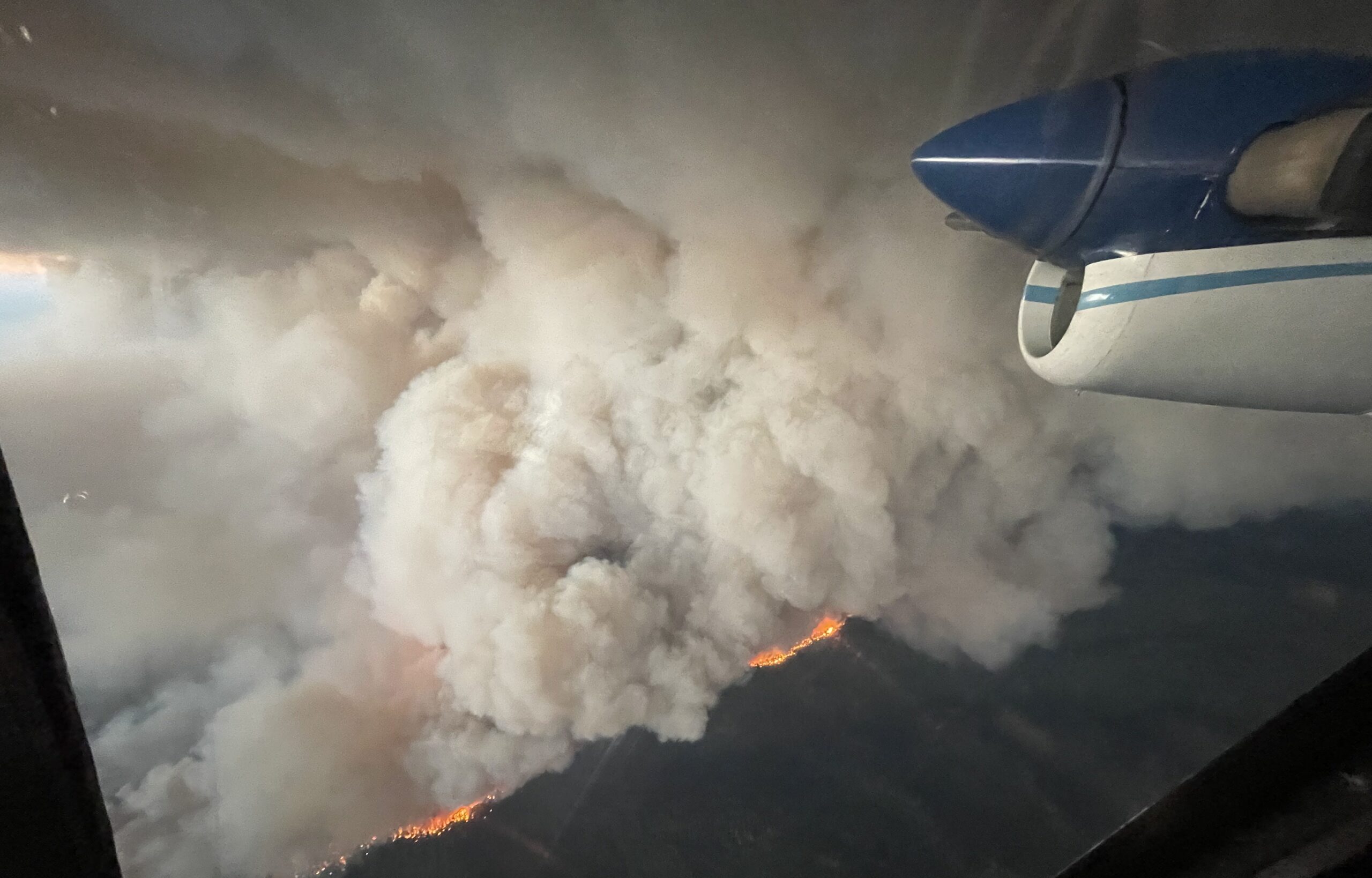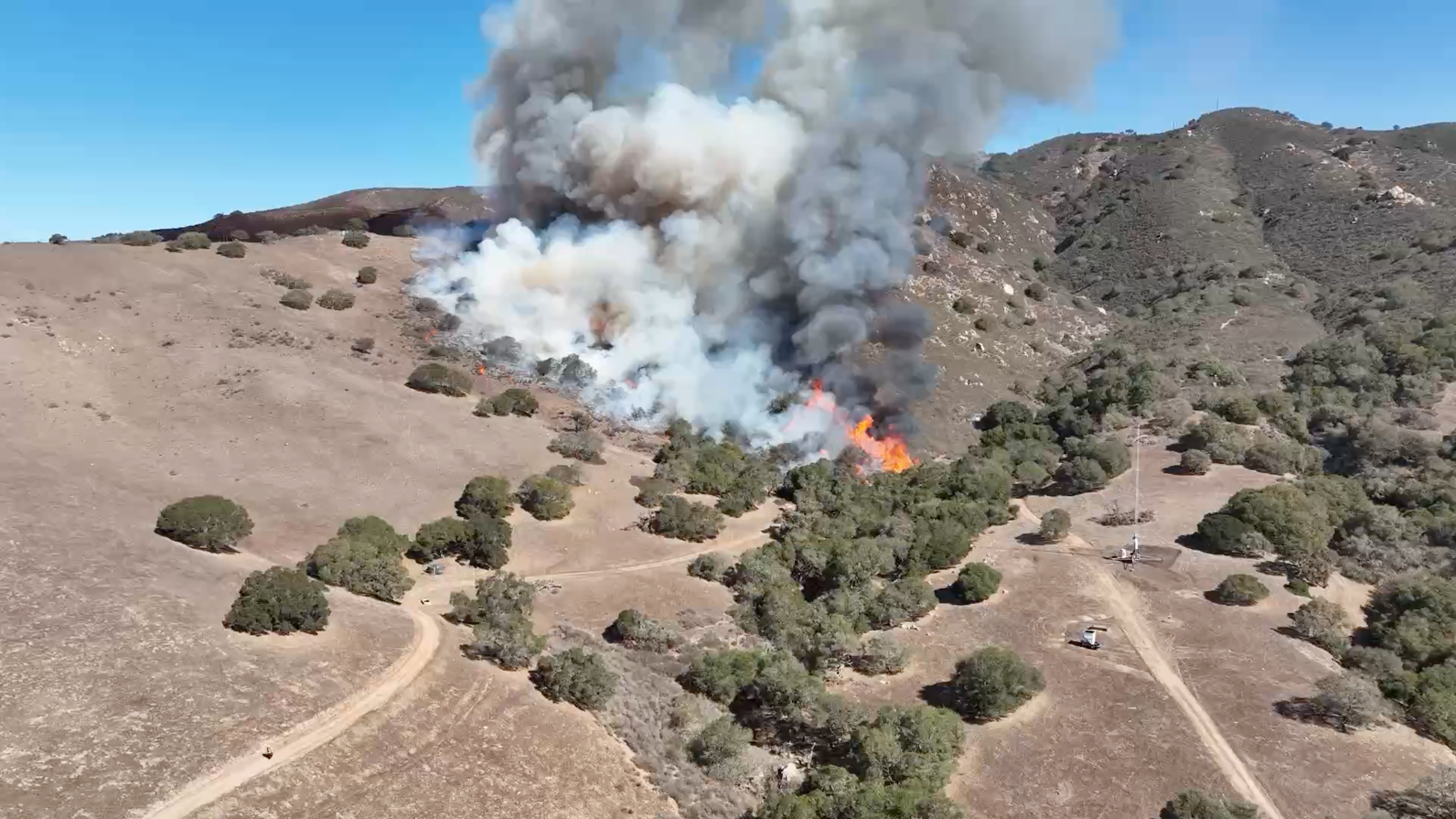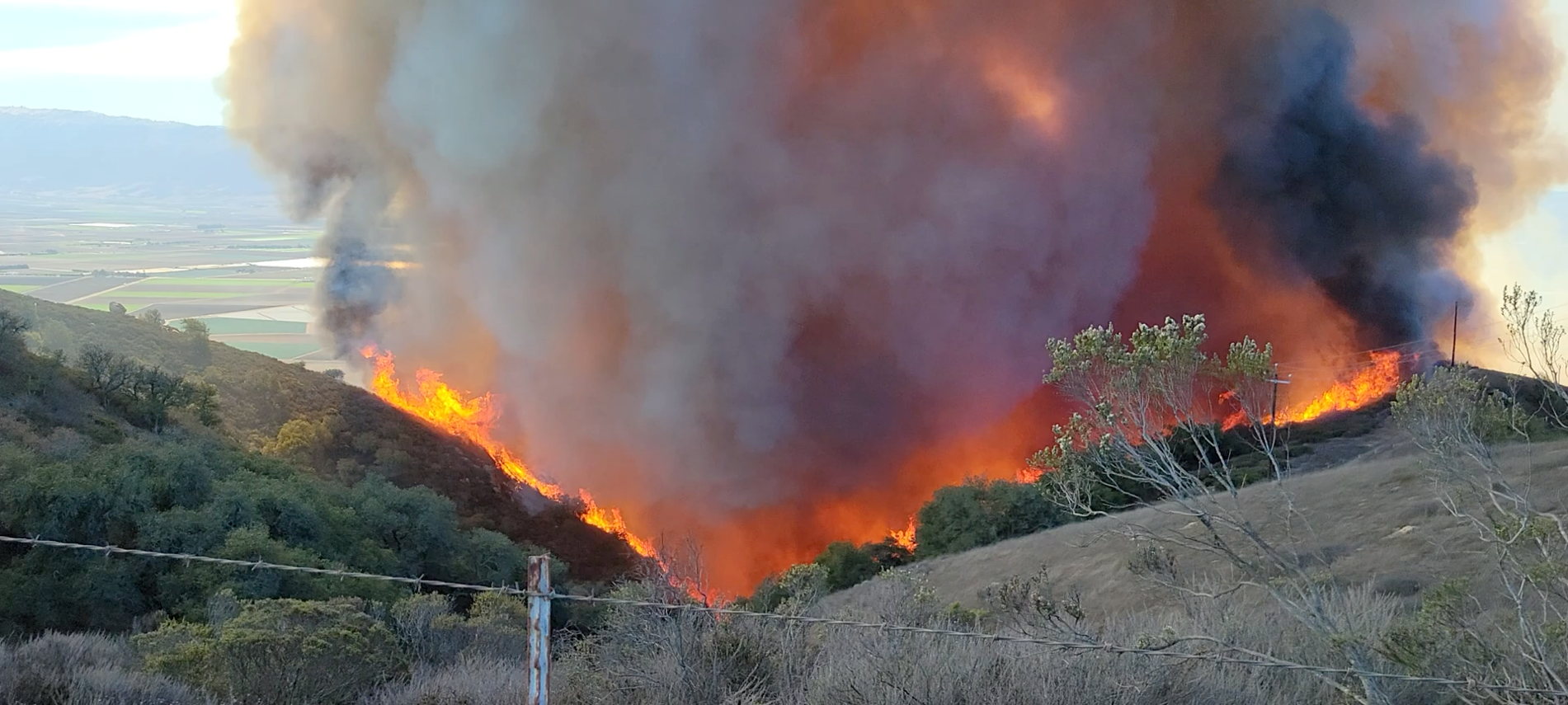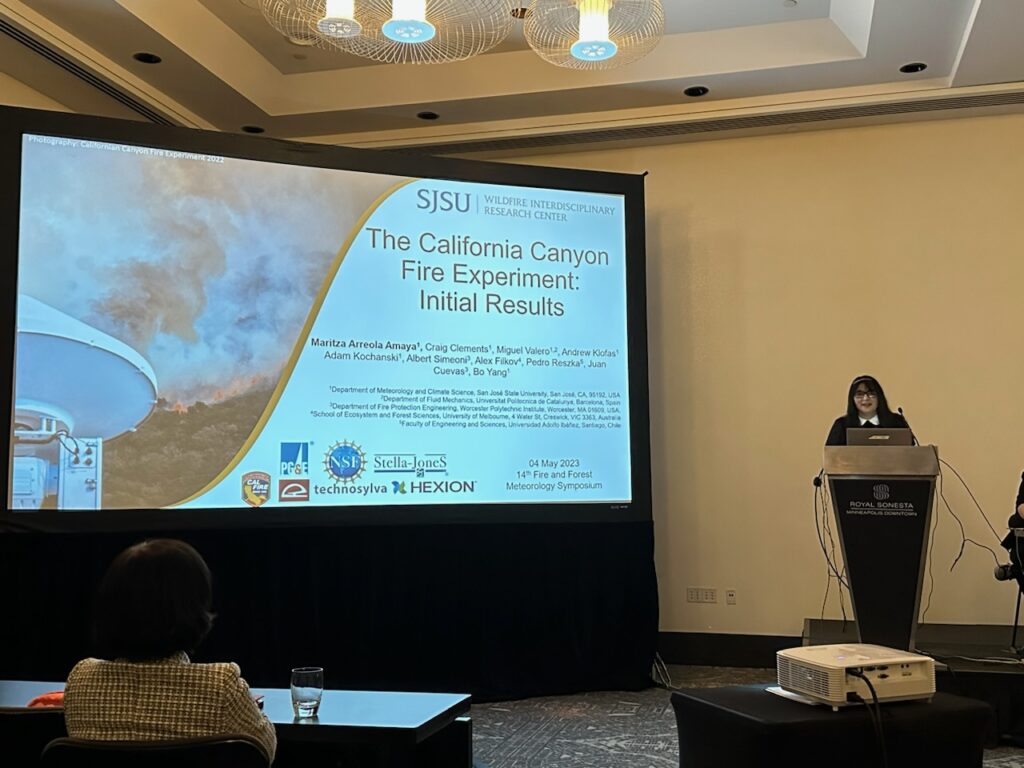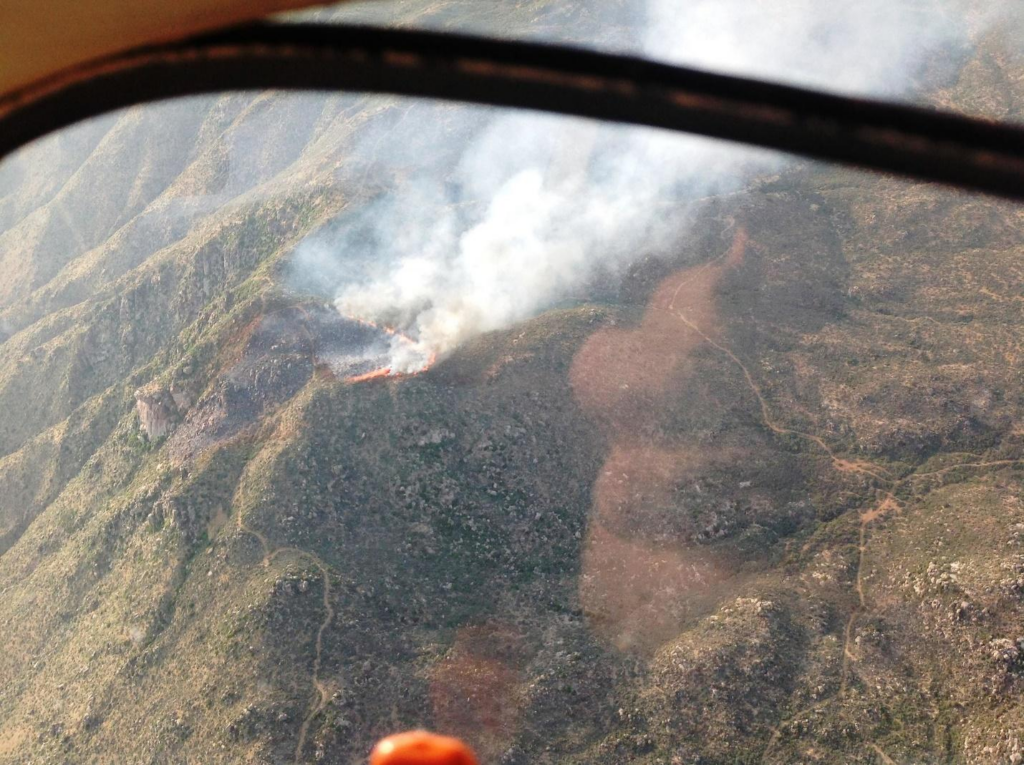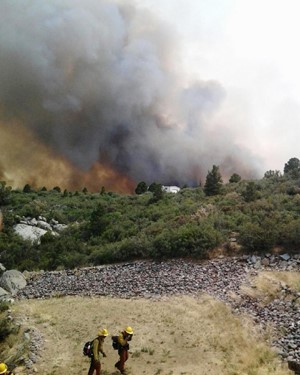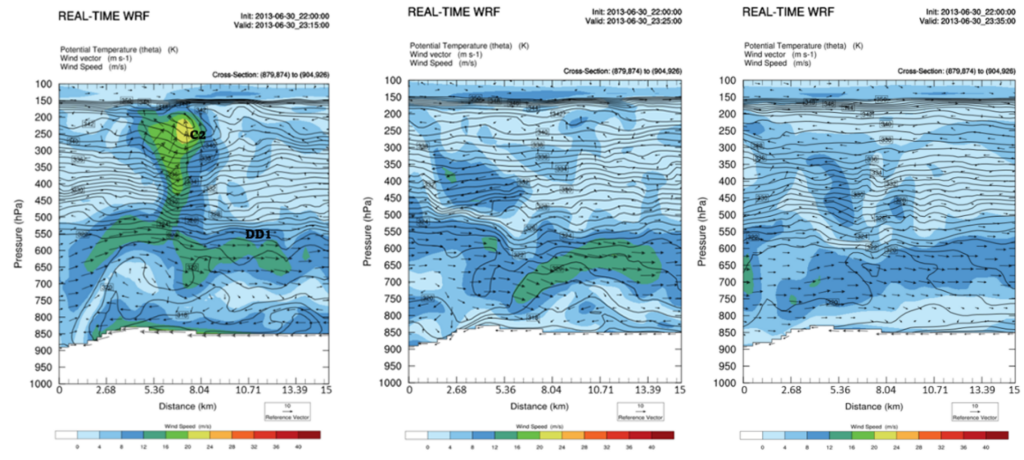A Research Spotlight from the 14th Annual Fire and Forest Meteorology Symposium, 2–4 May, 2023
Through the smoke of record-setting Canadian wildfires–which continue to burn millions of acres in the north–the importance of understanding huge, landscape-scale fires has never been clearer. In a 4 May presentation in the ninth session of the 14th Fire and Forest Meteorology Symposium, Brian Carroll discussed recent efforts to gather scientific observations on these types of landscape-scale wildfires in California and Oregon through CalFiDE, the California Fire Dynamics Experiment. His team looked at the behaviors of these fires and the winds they create and interact with, as well as the impacts of smoke plumes on air quality.
Field observations of wildfires this large are very rare. The CalFiDE team (including scientists from NOAA, CIRES, San Jose State University, the University of Nevada Reno, and NASA) used airborne and ground-based vehicles and a satellite to take measurements of five fires in August–September 2022. That included the Mosquito Fire, the largest in California that year, which burned more than 76,000 acres and prompted evacuation orders for 11,000 people.
Carroll described the difficult and potentially dangerous process of conducting continuous observations of huge fires, without getting in the way of firefighters and emergency managers.
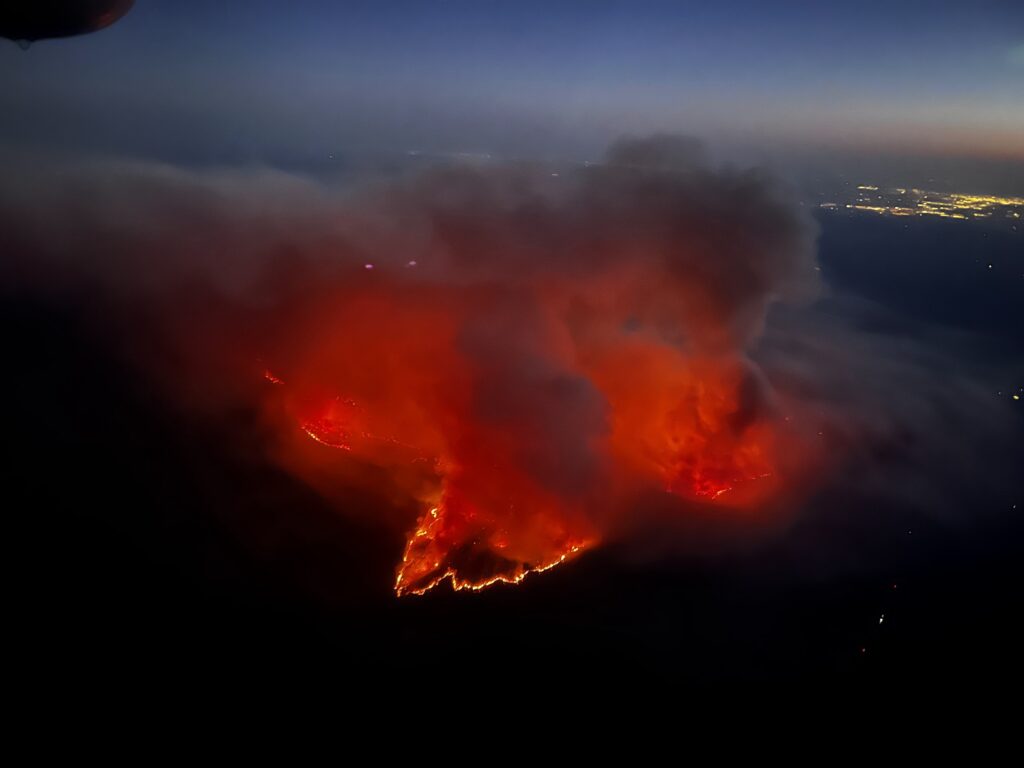
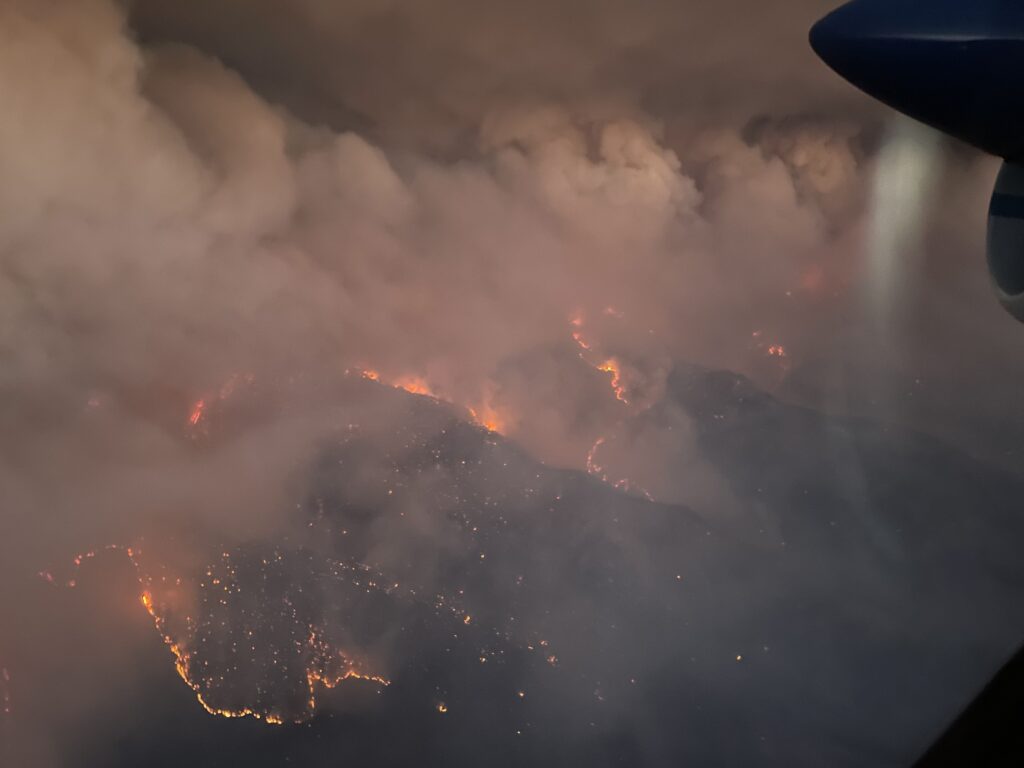
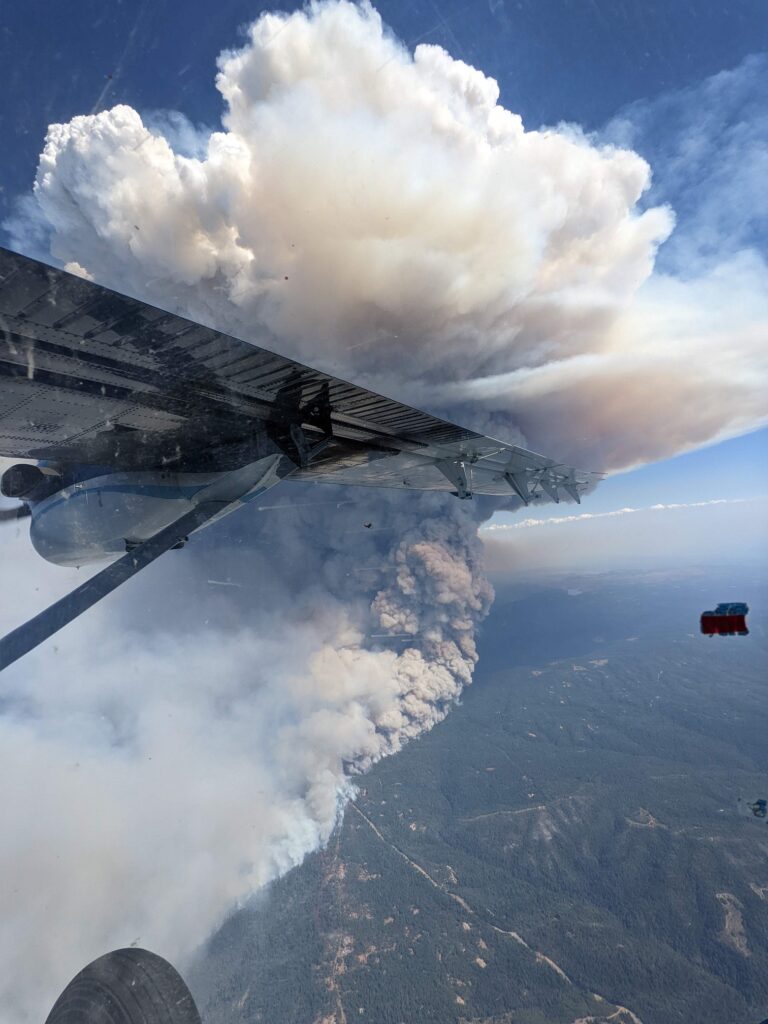
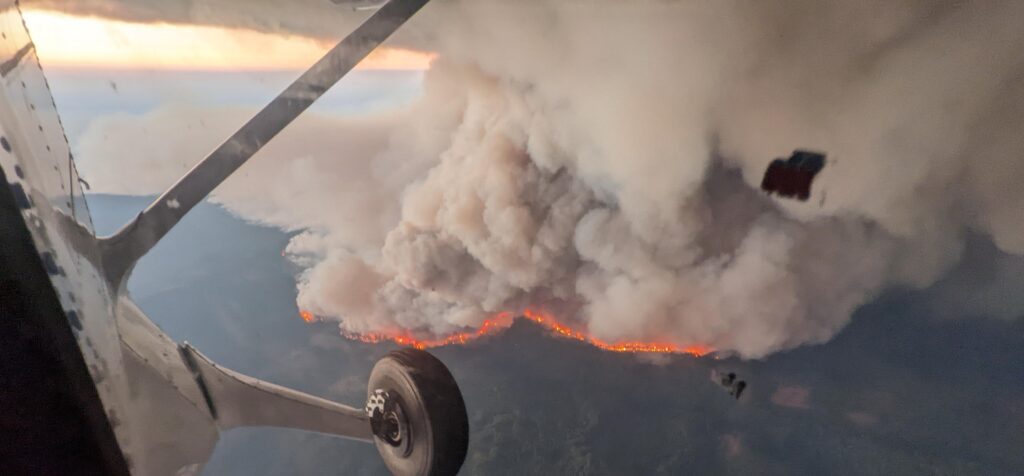
“There’s an aircraft exclusion zone that’s dedicated for the firefighters,” he notes. “The pilots have that information and avoid those areas but the pilots’ own decisions to keep our aircraft safe against the strong fire-generated winds and smoke are also a big driver. Even at a safe distance from the strong updraft produced by the fire, the wind convergence into the smoke column had to be compensated for by angling the plane away.”
They were aided by state-of-the-art mobile Doppler lidar systems that allowed them to map air and fire behaviors over large distances in complicated terrain. “There are few lidars in the world capable of making these wind measurements while moving, and that mobility is important when dealing with wildfires that are constantly evolving,” Carroll says. “The lidars also provide real-time information on the winds and location of smoke layers, and we use that information to optimize sampling patterns and target layers for sampling trace gases.”
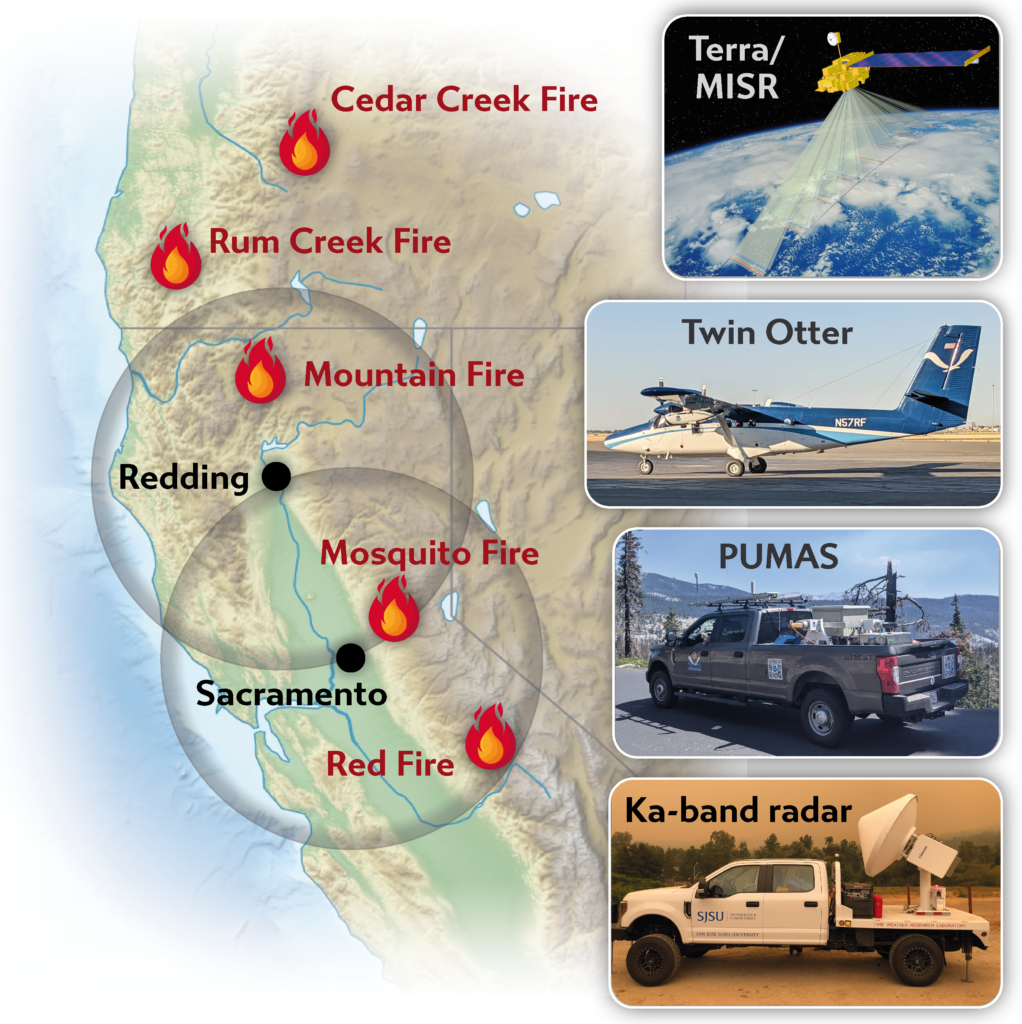
The CalFiDE team conducted surveys with a NOAA Twin Otter airplane, using Doppler lidar, infrared imaging, and trace gas measurements. They also drove an instrumented pickup truck (known as PUMAS, the Pick-Up-based Mobile Atmospheric Sounder) on the outskirts of the fire with additional Doppler lidar and temperature measurements, getting a 3-D picture of the winds above the truck as they drove. Meanwhile, the Multi-angle Imaging SpectroRadiometer (MISR) instrument aboard NASA’s Terra satellite provided a broad swath of smoke distribution information from space.
Above image: Fires observed during the 2022 CalFiDE campaign. Aircraft bases of operation with 1-hour flight range ring are shown in black, and platforms involved are on the right. The Twin Otter and PUMAS both had scanning Doppler lidars capable of profiling winds while underway.
The airborne lidar provided cross-sections of fire updraft cores (areas of hot, rising air) and smoke plume motions, complemented by the infrared imagery capturing the fire’s shape and evolving intensity. These are some of the first measurements of their kind, and will provide important ground-truth comparisons for fire and air quality modeling.
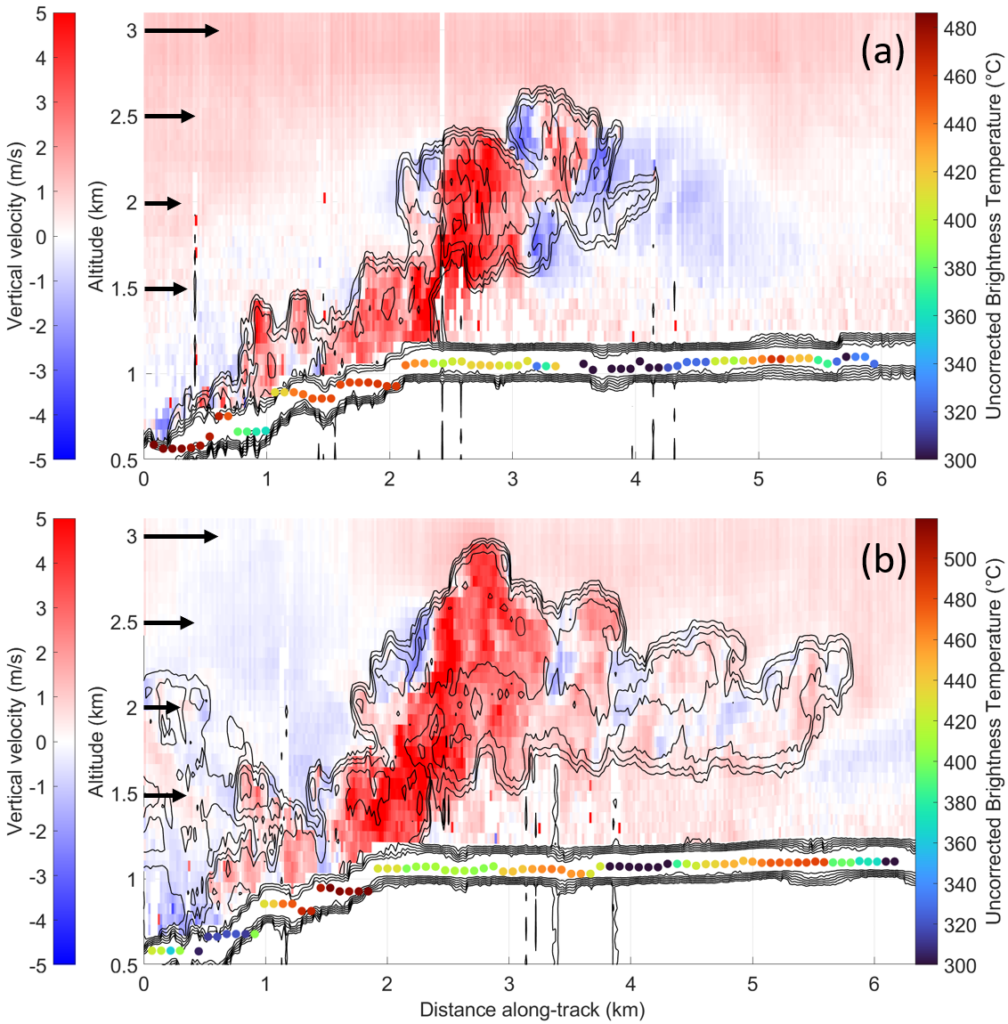
PUMAS observations also allowed the team to generate a high-resolution picture of smoke behavior in nearby areas—for example, the ways smoke lingered in valleys during calm conditions, and how rapidly air quality improved when sea breezes disrupted the smoke layer.
“Driving around these local valleys, in a few kilometers you could have a huge change in how much smoke there was, and a large change in temperature. And there’s a major change in boundary layer dynamics as you move in and out of those regions.”
Brian Carroll, Research Scientist at CIRES/NOAA
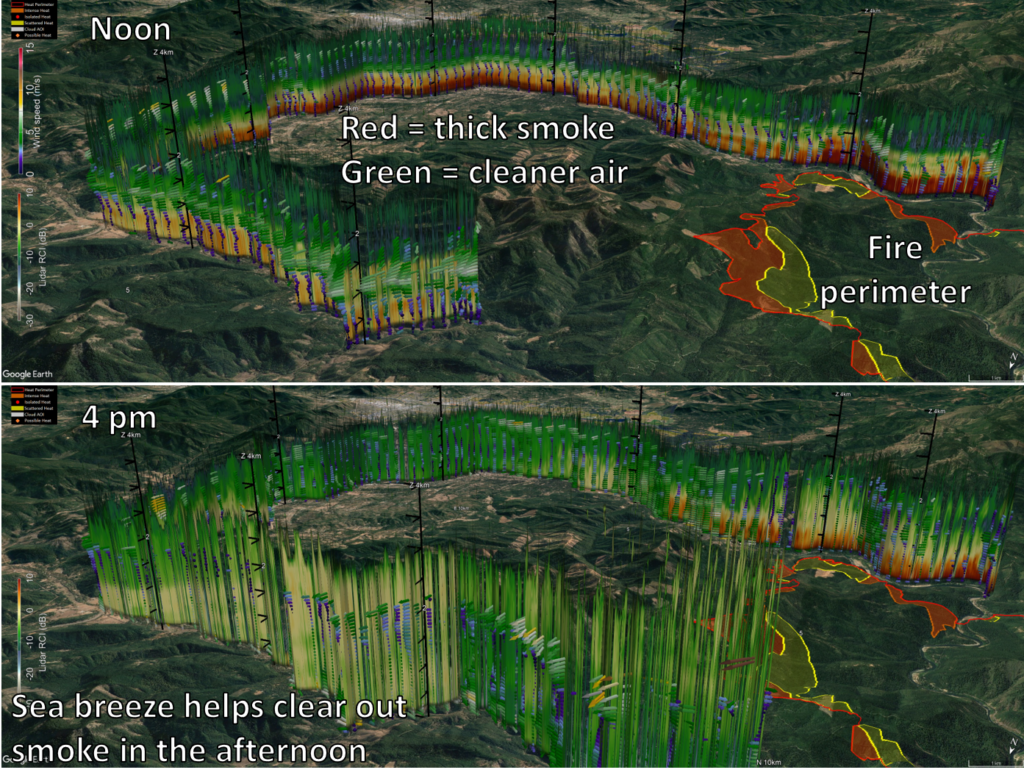
“The West Coast of the United States has experienced terrible fire seasons recently, with smoke impacting the lives of millions and fires themselves displacing many others. People across the U.S. and Canada have gained additional insight this year into what that’s like. We need more comprehensive information about how these fires grow, how the smoke moves, and the atmospheric conditions that interact with the fires, as we face a future that will likely see even more extreme fire seasons. The CalFiDE team’s efforts will help meet those needs,” Carroll says.
An article providing an overview of CalFiDE has been submitted for publication in the Bulletin of the American Meteorological Society.
Brian Carroll is a research scientist with the Cooperative Institute for Research in Environmental Sciences (CIRES), working in The NOAA Chemical Sciences Laboratory (CSL) Atmospheric Remote Sensing Program.
The recording of this session is now publicly available here.
About 14Fire
Meteorology and wildfires are intimately interconnected—and wildfires are becoming increasingly severe and frequent in many parts of the United States. From local residents and firefighters on the ground to planners and insurers, to people hundreds of miles away breathing wind-driven smoke, society relies on our ever-improving ability to understand and forecast fires and the related atmospheric conditions. The American Meteorological Society’s 14th Fire and Forest Meteorology Symposium brought together researchers and fire managers to discuss the latest science. All conference presentations are now publicly available.
Top image: Mosquito Fire flames and smoke on hillside, seen from the NOAA Twin Otter during CalFiDE on 8 September 2022. Photo credit: LT Nick Pawlenko.
